This is our original farrowing house design that has since been upgraded, and then finally expanded upon to our farrowing barn. We did incorporate elements from this initial design that worked well, and upgraded and changed those that didn’t based on using it for a few farrowings
A couple weeks before Big Marie’s highly anticipated litter was due, we scratched our original plans for a hoop house style farrowing house and went back to the drawing board. Big Marie has lived her life here being rotated through our woods while sleeping in a three sided Port-a-Hut. I hope that someday we will be able to have our sows farrow on pasture with little to no interference from us. But, our first farrowing with a first time mom in the dead of winter was not the time to start. So, we decided to design a more secure and protected house for her to have and raise her babies in. Something to protect Big Marie and the piglets from whatever weather we had while allowing us to implement some safety measures for the piglets.
The first three days of a piglets life are its most critical and mortality rate is its highest. Piglets are their most vulnerable and prone to accidental crushing or being stepped on when they aren’t as quick or haven’t learned to get out of mom’s way. There are some design features we built into the farrowing house that would help keep the piglets safe in these critical first few days and beyond to minimize the potential for accidents as much as possible.
The Layout
When building the farrowing house the last thing that we wanted to do was construct a whole new structure just for one purpose. This is only going to be used when she farrows and until the piglets are weaned. Then she will be back in the woods rooting to her heart’s content sleeping in her port-a- hut. So for something that is so temporary, we decided to close off a large portion of our oversized chicken coop and convert it into her farrowing house rather than build new.
We ended up closing off a 6 x 8 foot rectangular portion of chicken coop and giving it to Big Marie. The key with this was walking the fine line between giving her enough space to get up and move around, but not too much space so that she could potentially lay down far from her piglets heated safe zone and they get lost when trying to nurse. When they are only a day or two old, they bumble and stumble around, and if mom is too far away they potentially may not be able to find her. With this set up, whichever direction she decides to lay down she is very close to the babies for nursing.
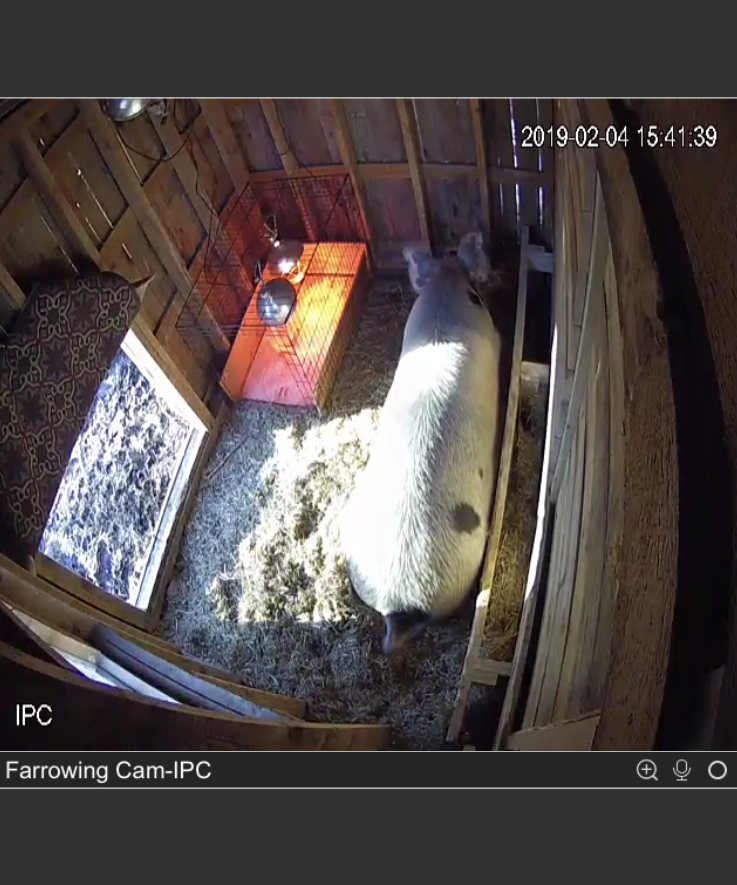
I would never feel comfortable with such a small enclosure if this was all she had for space. She needs to walk around, go to the bathroom, and get some fresh air! We have a large paddock for her that she can access whenever she wants to stretch her legs, which is is where her food and water are. Putting these things outside encourages her to get up and walk around a bit, which is what she needs post farrowing. Because of the additional ~2,000 square foot outdoor space she has, I feel very comfortable with the smaller size of her enclosure and it has worked well thus far.
The east facing 8 foot long wall has a bumper that sticks out eight inches from the wall and twelve inches off the ground. This gives her something to lay against that isn’t a wall. As she is going down, if a piglet is in the way it can run under the bumper for safety and not get crushed. Behind the bumper on the wall that divides the farrowing house and chicken coop is a man door that gives us a point of access.
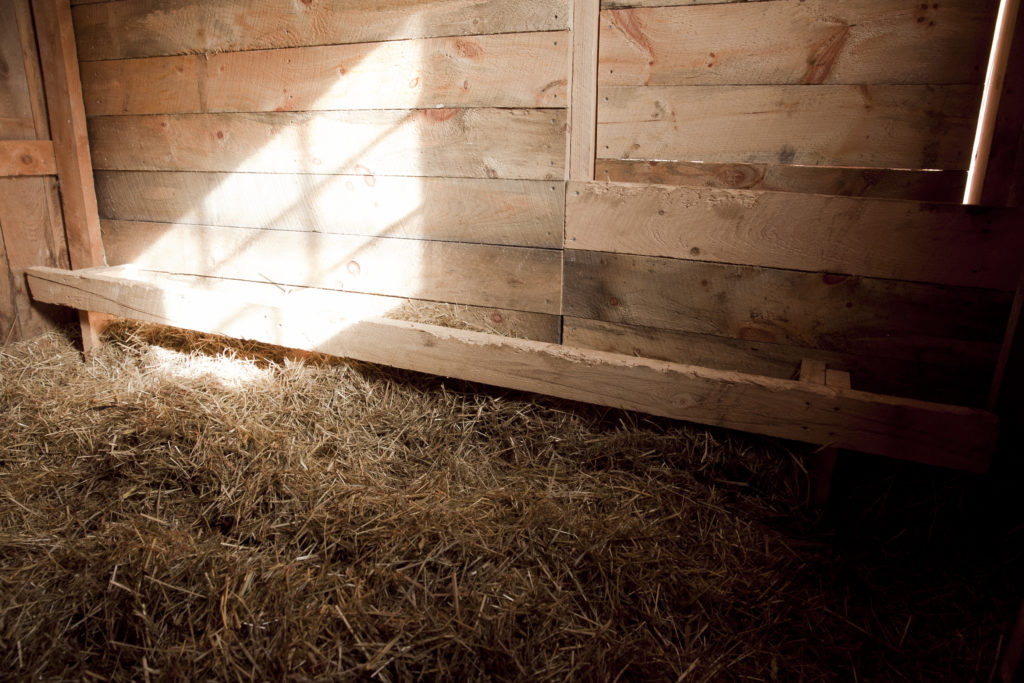
On the opposing west wall is the door that gives Big Marie access to her paddock. There is a permanent door that can be shut. But, because she doesn’t particularly like to be shut in, I fitted the door with carpet padding and a rug to help block any drafts. This will allow her to have free access to go in and out as she pleases, but it will cut down on the drafts to preserve heat in her house. On sunny days, I have a hook that I can pull it up with to let in the warmth and fresh air.
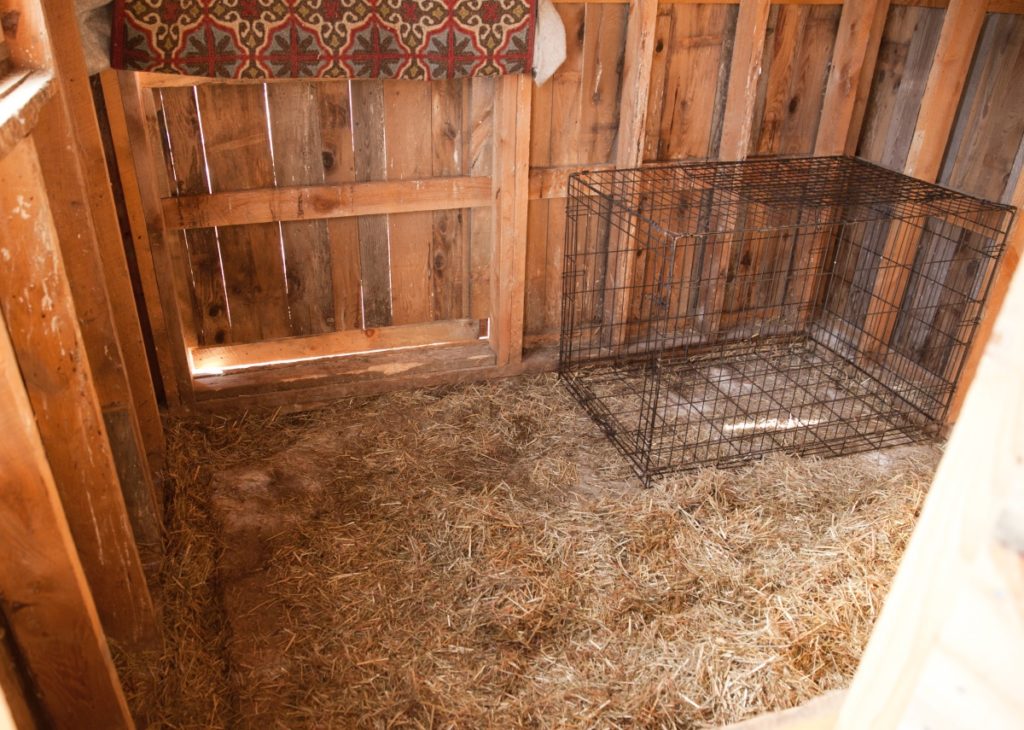
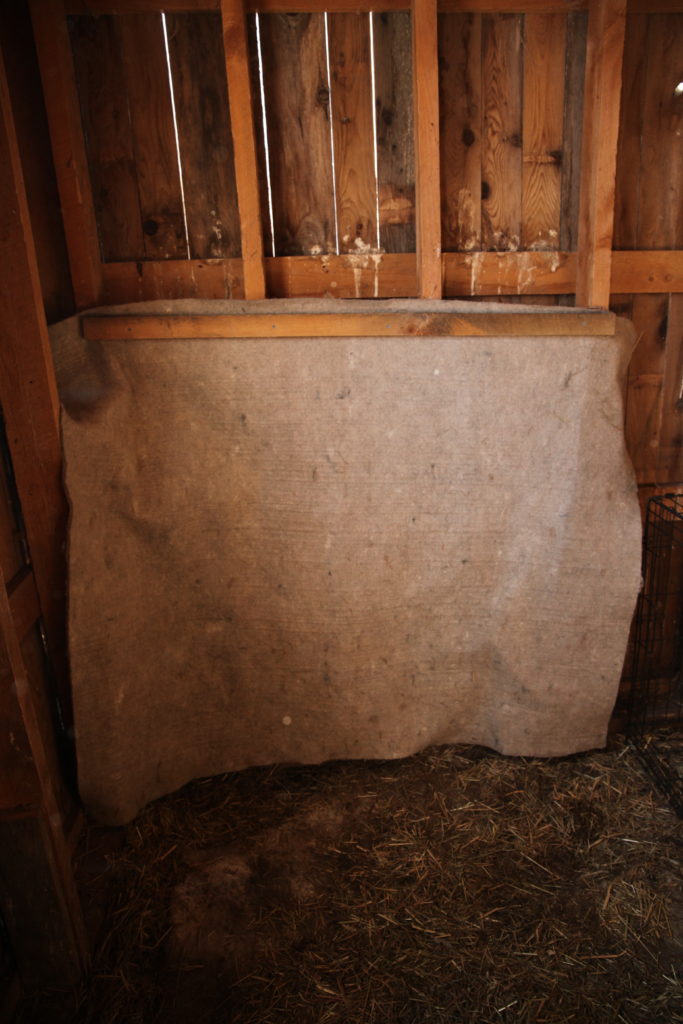
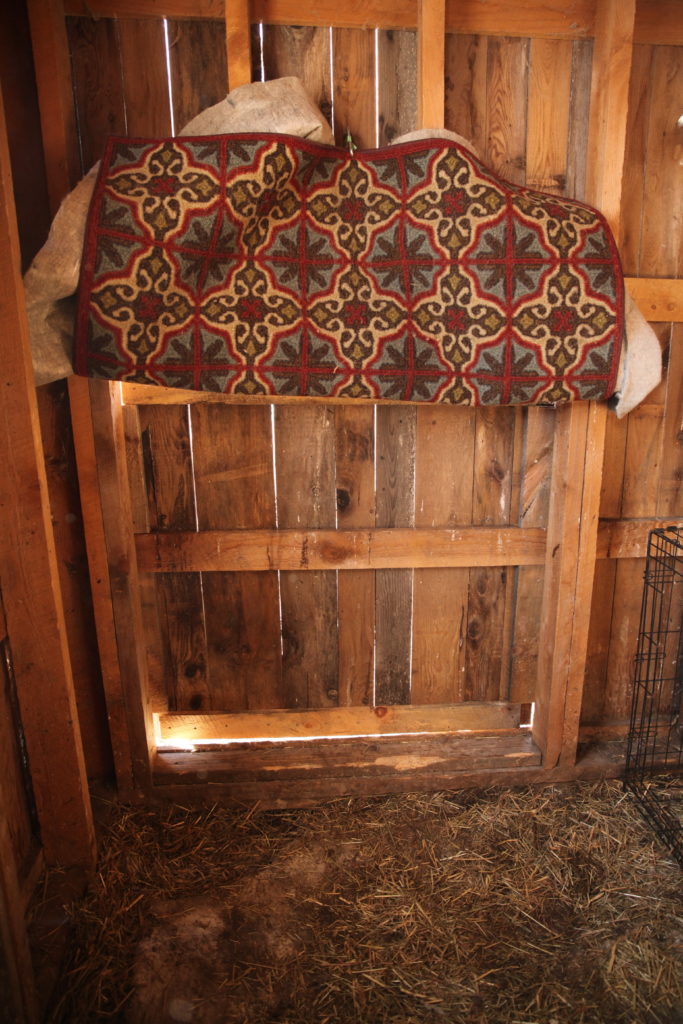
To the right of the door is an old 3×4 foot wire dog kennel with the door removed. While most people put in a second bumper for the piglets, our heat mat happened to perfectly fit in a spare dog kennel we had and decided to give it a try. This serves as the piglet’s “safe space” where they can go to stay warm and will help prevent them from getting crushed by mom. The bottom of the kennel has a Stanley heat mat with heat lamps hanging from the wire above. Because they aren’t in a heated and/or insulated barn, being born in the winter months calls for multiple heat sources to keep them warm and a comfortable 80-85 degrees.
Drafts are always a concern so three sides of the kennel are lined with 10″ tall plywood to keep the heat contained, block drafts, and help channel the piglets to the door. About a third of the kennel opening closest to the paddock door is fitted from top to bottom with a piece of plywood, as well as another piece perpendicular to it about halfway up. It serves again as draft control as well as a way to keep Big Marie from sticking her head in the doorway and potentially pulling out the heat lamps and mat. The piglets have enough space to scoot out from underneath the wooden board to go out and nurse, then when they’re done they sneak back under to warm up. This keeps them from cuddling with mom to stay warm, and helps minimize the potential to be rolled on and crushed.
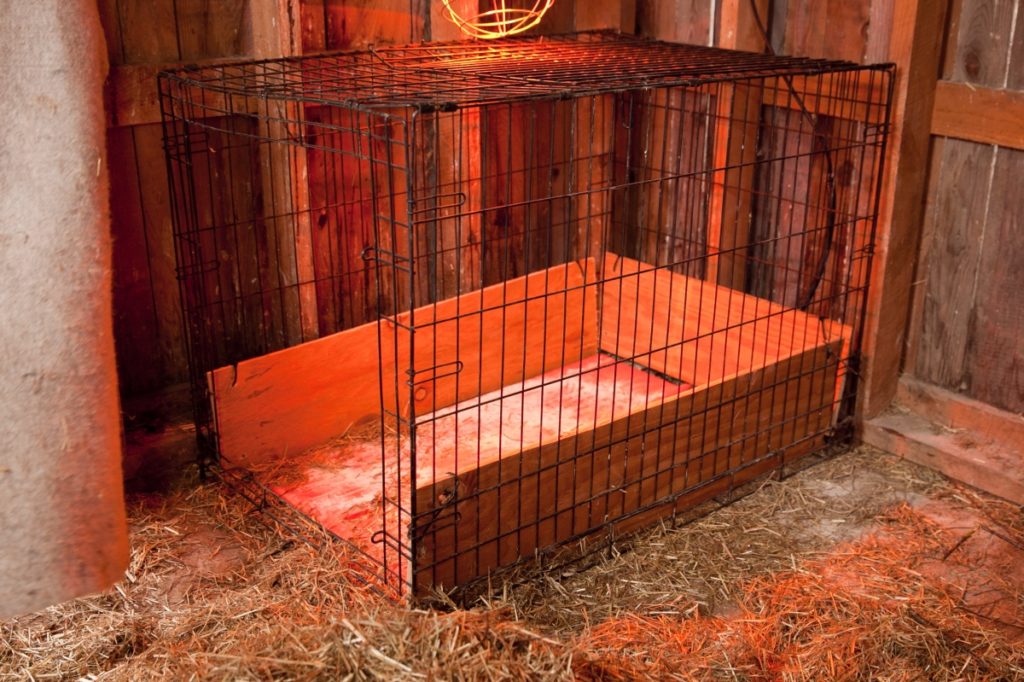
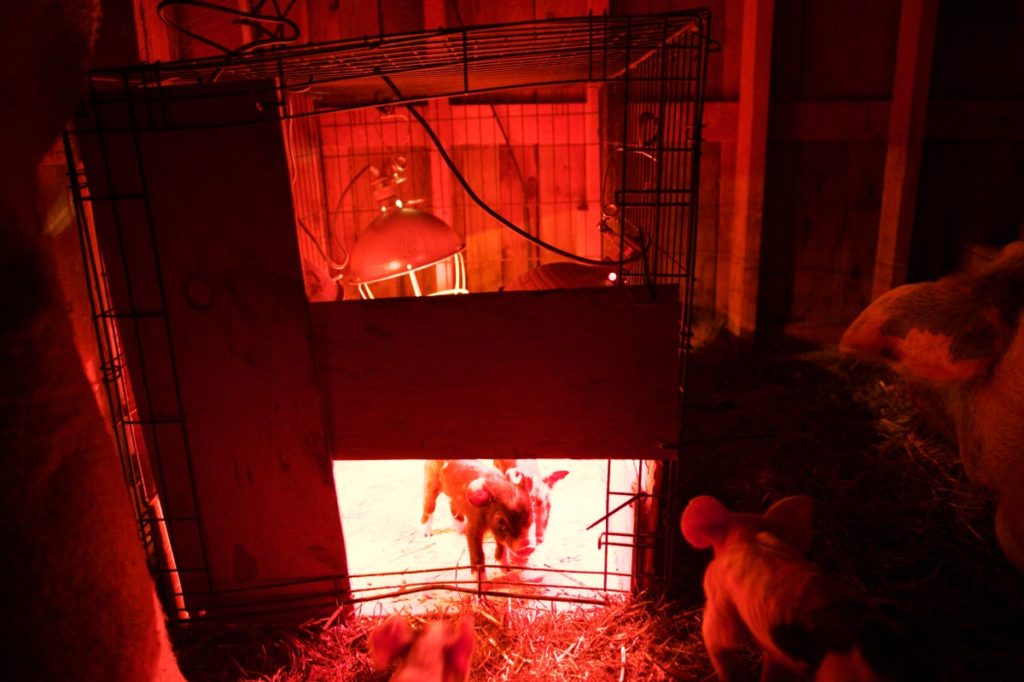
We are four days post farrowing, and while accidents can always happen, I can take a little bit of a breather knowing we are out of the 3 day “danger zone”. So far, the farrowing house set up as a whole and more specifically the dog kennel set up have worked very well for us! The piglets have learned to go into the kennel to warm up on their own, and they are getting bigger and stronger everyday while learning to watch their mom’s footing and get out of her way.
Do you raise pigs for breeding and have a farrowing house or do they do it on pasture? The best way to learn is from others, so let’s hear what everyone does below!
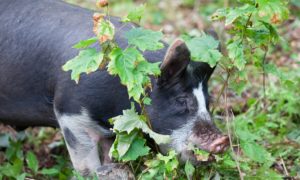
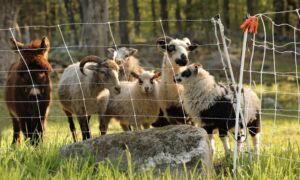
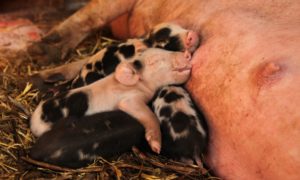
Pingback: My First Farrowing Experience | The Modern Day Settler
Pingback: New Farrowing House Design - The Modern Day Settler
This is awesome! We are going to be breeding our pigs and I need my girls to have a decent place. This is the perfect idea to use with an old crate? Do you have the dimensions is it a Large or XL crate?
Syrina please read the “updated” farrowing house blog post I linked to in this one. The kennel was a bust!